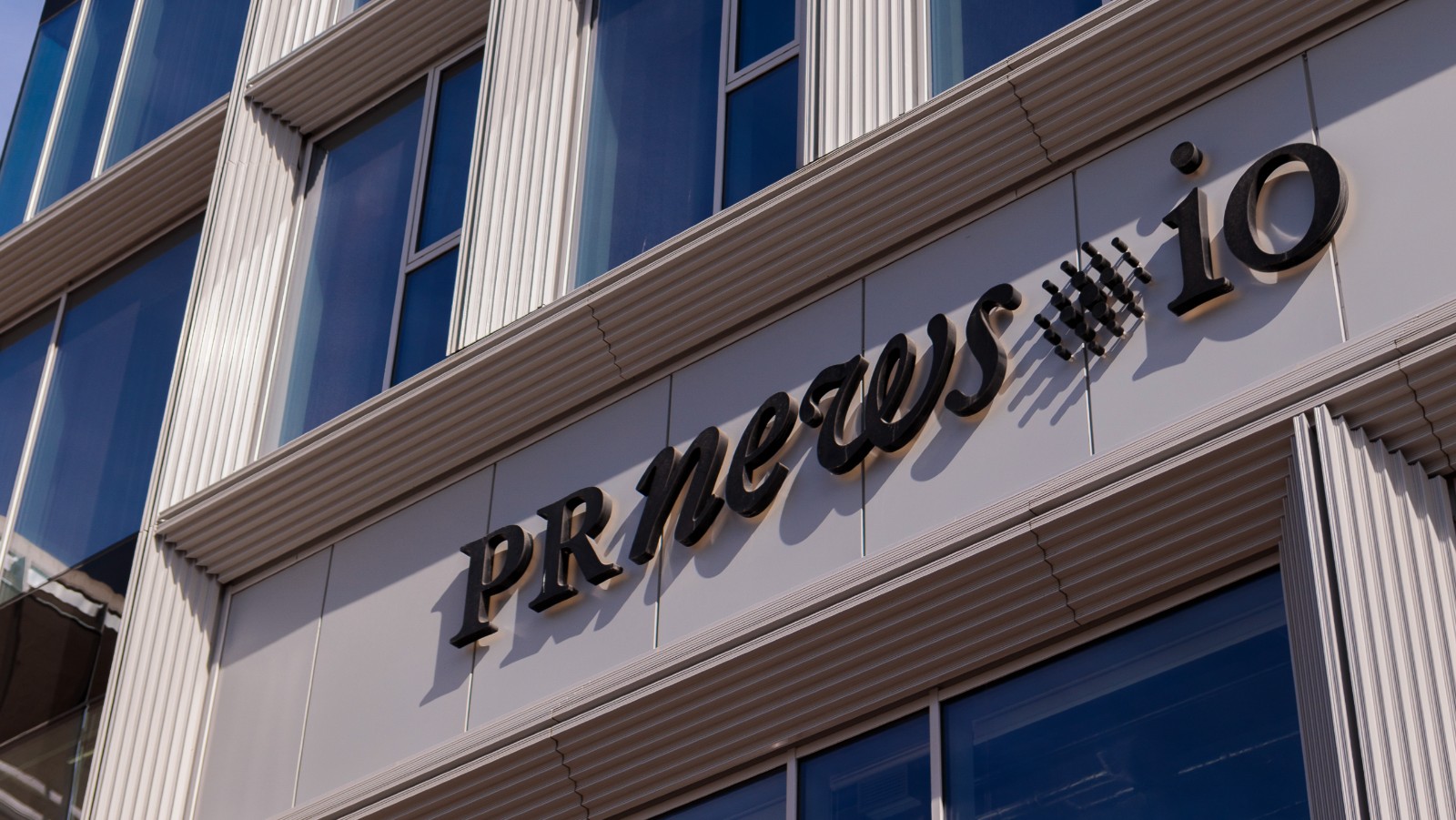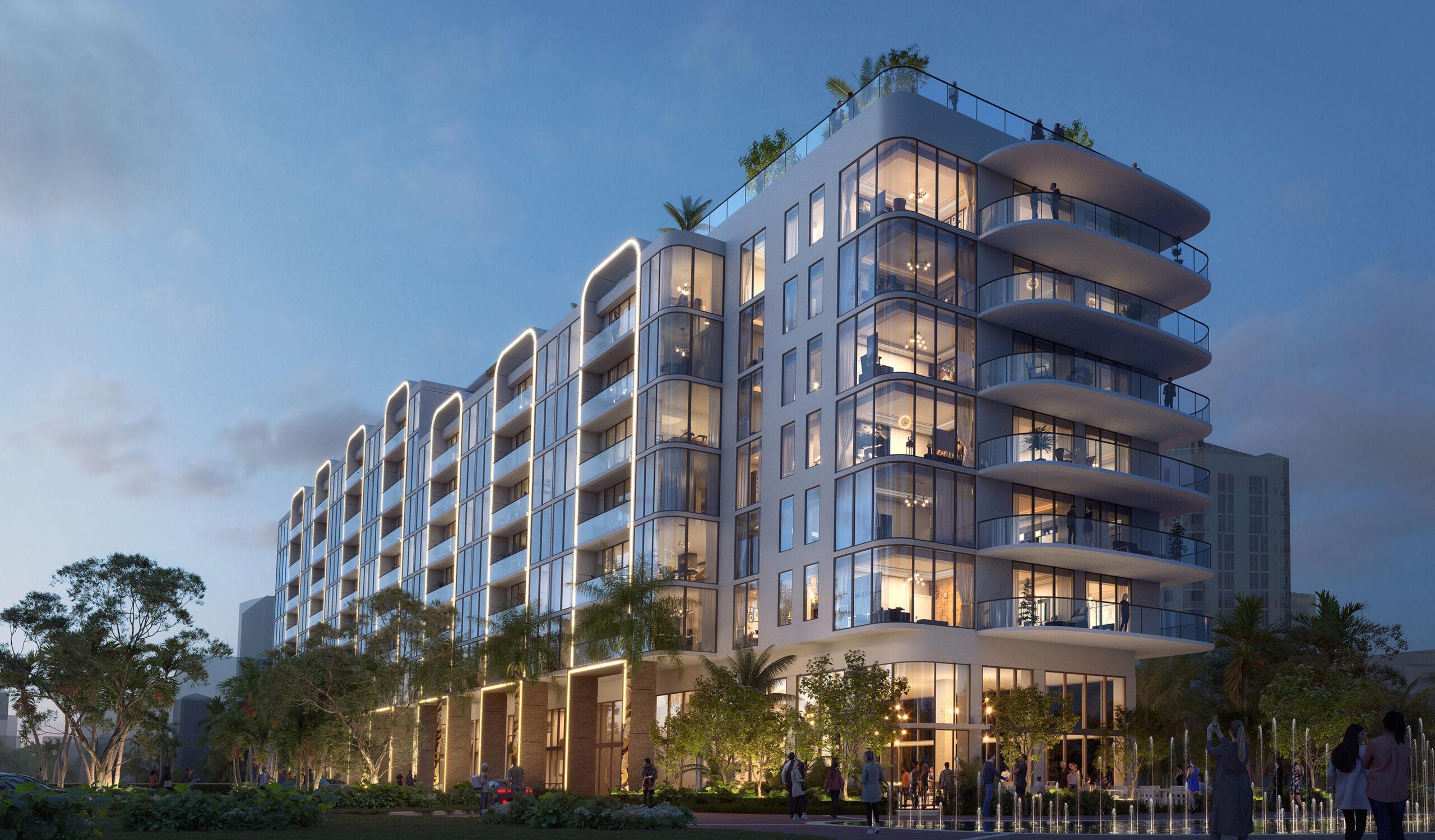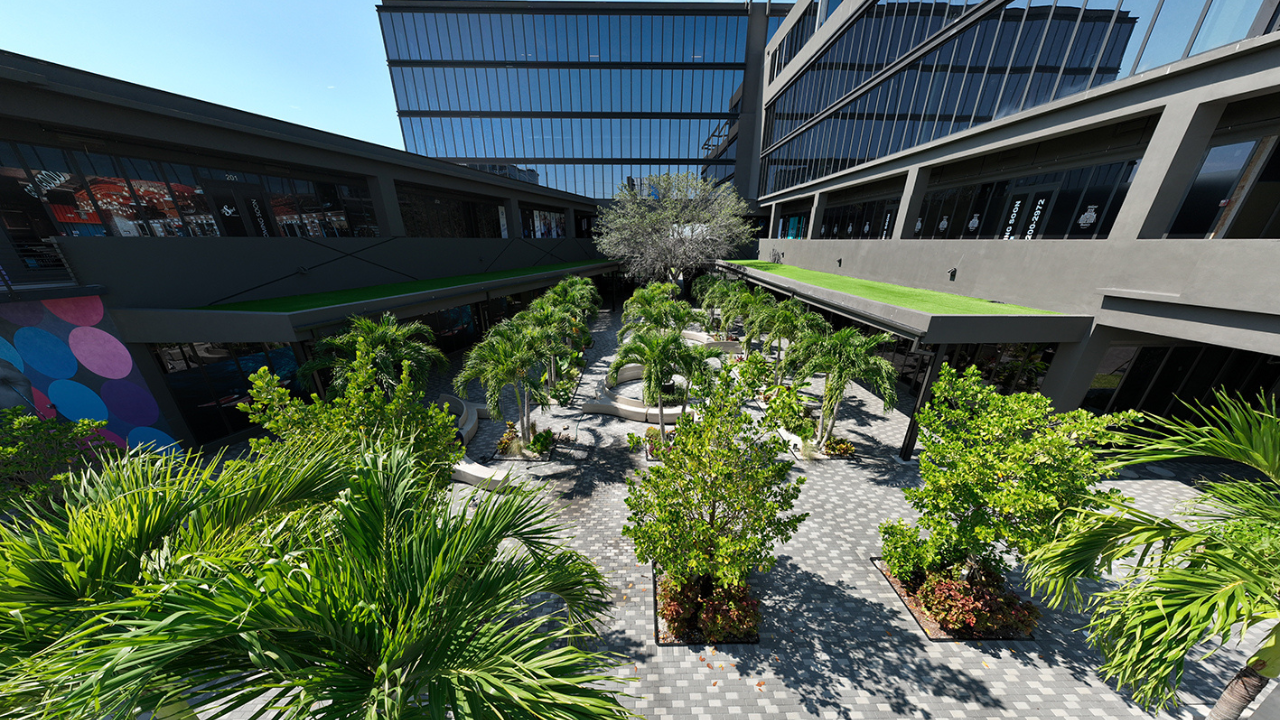[vc_row css_animation=”” row_type=”row” use_row_as_full_screen_section=”no” type=”full_width” angled_section=”no” text_align=”left” background_image_as_pattern=”without_pattern”][vc_column width=”2/3″][vc_column_text]
Sponsored by

The construction industry remains strong in South Florida, but it’s dealing with changes in the marketplace. Retail is becoming more entertainment-oriented. Infill projects and public private partnerships are becoming more common. Those in the industry are also coping with the impact of tariffs.
SFBW’s construction roundtable included many of the biggest construction companies in the region—listed on the facing page. The discussion was moderated by Editor-in-Chief Kevin Gale and held at the Fort Lauderdale offices of Brown & Brown Insurance, which has many contractors as clients. The following transcript was edited for brevity, clarity and continuity.
What has been the impact of tariffs and changes in commodity prices on your projects?
Olmstead: We’ve seen metal conduit, that’s a big one [that’s risen in price]. One of the big things we’re seeing now is almost all of the light fixtures, parts and components come from China. So, the lighting fixtures are starting to creep now. We’re starting to see how that’s affecting us. When we make an order, we usually don’t take delivery for six months, but we’re having to take the delivery now to beat the tariffs. We don’t know where the tariffs are really going to be. I always ask them, how is it breaking down? Was it 10%? Fifteen percent? Show it to me because I don’t think all of it should be under the tariffs.
Scott: The day after tariffs were announced, we started getting letters from suppliers that said our duties tariffs or prices are going up. There weren’t any tariffs. I think a lot of suppliers were just taking advantage of what they can. I don’t see tariffs as being a major part of construction cost increases. It’s just a component of it.
Kirby: There was a big scramble on cabinets and tops. As always, people find workarounds. It seems like now, all the product that were coming out of China, people are now starting to shift over to Vietnam and other areas. I even was told that there’s a Chinese manufacturer that’s actually building a new factory in Vietnam. We did have a couple of jobs that got caught up. In one, there was a financial impact. For the other, there was a ship stuck at PortMiami. They were backed up trying to get through Customs because they were just scrutinizing everything that came out of China. But, it’s kind of like what Dale said, it was almost more of a hiccup than it was a long-term impact.
Raphael-Dynan: We can only hold our prices for 30 days, where we used to be able to hold them for 90. Sometimes, we bid our projects so early out before the permit is ready and before they’ve actually done the entire design. So, our price can inflate drastically over a two-month period.
How are you adjusting to that? Who’s eating the cost increases?
Raphael-Dynan: I guess it depends on the type of contract we have. We try and have partners with our clients … so that it’s pretty transparent, where all the costs are going. Sometimes, they’re able to partner with us. If it happens after we signed the contract, then it’s on us.
What type of projects are hot and what’s not in South Florida? What are you building now?
Burleigh: I’ve seen a tremendous uptick in the senior living, assisted living and memory care markets throughout South Florida. Traditional multifamily developers who are in the market rate business have now been now dabbling into the assisted living. We’re seeing new clientele go into there because of the rents and returns they are able to get. So, that’s one business, we’ve seen a huge uptick in.
We just finished 144 [apartment] units in Pompano and 456 units in Miami Lakes. Both projects were repurposed surface parking to take advantage of the land and using structured parking to to offset what they lost. We’re seeing a lot of that in small spaces where they’re taking surface parking and repurposing it with a residential component.
Scott: The shopping center as we know it is kind of a thing of the past. We aren’t building many shopping centers. Everything seems to be the trend into mixed use. Although I didn’t want to particularly be an apartment builder, we are forced into it simply because that’s part of the components of the building.
We just finished a 200,000-square-foot warehouse for Goodwill in the Tampa Bay area. We’re seeing an awful lot of that pick up right now—large, high-bay warehousing. A lot of that has to do with the new [Panama Canal expansion] and the products coming into the ports.
Kirby: We probably got seven apartment deals that will be coming out of the ground between now and the first quarter of 2020, so it’s still a very strong market. We’re starting to see more opportunity on warehousing. We’re finishing up several garden [low-rise multifamily] deals that have a large tract—a 30-acre project, 16 buildings, 392 units. We have another garden deal in Lantana. We’re also we’re seeing the shift back towards these more downtown sites like 2- to 2½-acre sites. We just started a seven-story apartment deal on a couple acres in West Palm Beach, just on the outskirts of downtown. We’ve got another one on a similar size site, literally a block away from this one. It’s that location thing. People like to be close to downtown.
Harden: We just started at the Dadeland Mall. We’re building an AC Marriott connected to a Macy’s with a sky bridge. We just broke ground last week. Simon malls is now partnering with hospitality and multifamily developers to redevelop, like Turnberry is doing in Aventura right now where the mall becomes an entertainment center. In senior housing, we’ve been very active in the last five years, but we’re seeing that up in Martin County and down into maybe northern Palm Beach County, it’s getting overbuilt. The senior housing projects that are in the suburban areas and not the urban locations are the ones that I don’t think are making it to the finish line right now. However, the infill-type senior housing that I see in downtown Boca Raton—anywhere where they can do vertical and it’s walkable—we see a lot of opportunity in senior [housing] in those locations right now. The other thing we’re seeing a lot of is the P3s [public, private partnership] -type stuff. In Boynton Beach, Boynton Town Center is a good example. A master developer came in with us and two other groups and partnered with Boynton Beach to redevelop their entire downtown. So, they did a $300 million project with a new city hall, new fire station, 900 units, a multifamily redeveloped high school that was built in the 1920s.
We just were awarded the Las Olas Marina project, which is at the base of the Las Olas Bridge to Fort Lauderdale Beach. This is a city project. They built structured parking, and so the abandoned parking next to it is going to be a superyacht marina, and then there’s going to be retail, a little bit of mixed use, but kind of an entertainment component. I’m finding cities are getting a lot more developer-type savvy, where they own parcels of land in key areas.
Olmstead: We’re very active in the International Council of Shopping Centers. Every year, they have a big conference in Las Vegas; there’s an invite of 35,000 people. Anyone involved in retail is there. One of the biggest differences I’ve seen is, just amazingly, over the last year: Something has to be done with those malls. We’re seeing a lot of call centers going into them, because they have large parking, big boxes of space. They’re trying to tie residential in with it. The big thing in retail right now is food and exercise. Entertainment and food used to be 15 to 20% of space. Now, there are shopping centers that have over 50% restaurants. So, we’re going through a major change in retail.
We’re finishing up some hospitals. They’ve done some deregulation in that arena now, where the certificate of need [a state approval process to get a hospital built] isn’t as important as it used to be. They can typically just go out and build a hospital. Before they had to go through the red tape, get the approvals, get denied and start again and try it again. JFK Northwestern, we’re finishing that up right now. We’ve got a new one in Fort Pierce that we’re going to have with HCA, that I think we’re going to be doing as well. There going to be a huge market. It kind of ties into the hospitals. It ties into the ALFs [adult living congregate facilities], memory, assisted living and independent living, because of the aging baby boomers that are here and coming.
Raphael-Dynan: The restaurants are becoming the anchors of the shopping centers. We’re building a Joseph’s Classic Market in Town Center Mall. It’s a huge, huge space. It’s the [former] Piñon Grill, Blue Martini space. In Sawgrass Mills, there’s a huge entertainment center coming. The food halls that are going in are becoming huge anchors for the shopping centers.
How about the condo market?
Harden: We’re breaking ground right now on the Mandarin Oriental Residences in Boca Raton. To me, it’s just location-driven, brand-driven with the Mandarin flag, that makes that one work. Aside from that, that’s the only project we’re bidding or building at this time. We’re not seeing much more activity, if any at all; it’s 30-unit, 20-unit. The tower condo product, I think is waiting a little bit.
Are we seeing any new developers and fresh sources of investment coming into the market?
Kirby: There’s a lot of equity from a lot of places. One developer came from Atlanta, and we’re doing multiple projects for him.
Scott: I’ve been in the retail side of the market since before most of you were born. Just a few years ago, I knew every project that was happening in retail. I knew who the developer was, I knew the people in that development. Now, I hear about a project and I’ve never heard of the company before. I can’t pronounce the names of the people and I don’t know where the money is coming from.
Lee: A lot of our clients are coming from the Northeast. CEOs come down here. The tax benefits of being in Florida should make a significant boon. We still do get clients from South America. As much as their economies are getting crushed, the people with money are still pulling their money out and putting it into the safe haven that is the U.S., and they are all aware of the tax benefits of being in Florida
Harden: We have had a lot of people from the Northeast and from out of the market, kick tires and ask questions and want to have conversations about what products are we building. I think there’ll be more and more people that look at Florida for economic reasons. And for development purposes.
Olmstead: The tax law changes that just took place over the last couple of years is building more and more interest. ♦
The panelists
• Eric Burleigh, vice president of preconstruction at Current Builders, a $200-million revenue, 47-year-old company headquartered in Pompano Beach. It’s a full-service general contractor that is seeing a lot of activity in multifamily rentals, senior living and assisted living.
• Jeff Harden, founder, owner and CEO of Straticon Construction, a full-service general contractor with office in Fort Lauderdale and Stuart. It is celebrating 29 years in business. Sectors include multifamily, hospitality and government.
• Rex Kirby, president of Verdex Construction of West Palm Beach, which he founded five years ago. It handles an array of projects, including multifamily, hotel, industrial and public works.
• Patrick Lee, president and owner of Miami-based Shorecrest Construction. It specializes in luxury residential, including single-family homes and condominium buildouts, and small commercial projects, especially hospitality.
• Jack Olmstead, president of Tri-City Electrical Contractors, a 61-year-old, Orlando-based company with an office in Pompano Beach. It does $300 million a year in revenue and its sectors include theme parks, multifamily and health care.
• Robyn Raphael-Dynan, co-owner and vice president of operations for RCC Associates of Deerfield Beach. It specializes in high-end restaurant buildouts, movie theaters and small hotels. The family business has $100 million in revenue and is approaching its 50th anniversary.
• Dale Scott, director of Hawkins Construction, a $200-million, 44-year-old company headquartered in Tarpon Springs with an office in Boca Raton. Sectors include health care, senior living, student housing, medical offices, retail, grocery-anchored shopping centers and warehouse/distribution.
[/vc_column_text][/vc_column][vc_column width=”1/3″][vc_gallery interval=”3″ images=”35095,35094,35093,35092,35091,35087,35088,35089,35090″ img_size=”full” show_image_description=”yes”][/vc_column][/vc_row]














